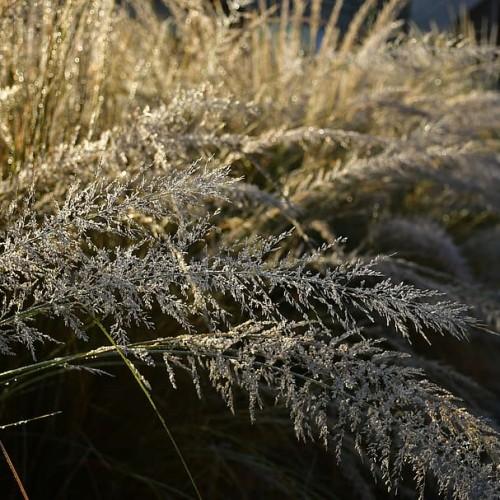
eulalia
Miscanthus sinensis 'Little Kitten'
Cycle:
Perennial
Watering:
Average
Hardiness Zone:
5 - 9
Flowers:
Flowers
Sun:
Full sun,part shade
Fruits:
Fruits In Autumn Ready In Fall
Leaf:
Yes
Growth Rate:
Moderate
Maintenance:
Low
Drought Tolerant:
Yes
Salt Tolerant:
Yes
Care Level:
Medium
watering
Eulalia thrives in moist soils, so it is very important to keep the soil consistently damp but not soggy. This species of grass should be watered every 2-3 days during the warmer months. When watering, water just enough to keep the soil damp, but not so much that there's standing water. It's also important to avoid over-watering as this can cause root rot. During the colder months, watering may not be necessary at all, except for periods of extended drought. Make sure to check the soil moisture near the roots every few days to make sure the plant is getting enough water.
sunlight
Eulalia (Miscanthus sinensis 'Little Kitten') grows best in full sun, which means it requires at least 6-8 hours of sunlight a day to thrive. In cooler climates, such as those in the northern United States, it can tolerate partial sun or indirect light for the first 6-8 hours in the day before receiving full sun for the remainder of the day. In warmer climates, such as those in the southern United States, Eulalia (Miscanthus sinensis 'Little Kitten') should be protected from direct sunlight during the hottest parts of the day and only receive full sun for the remainder of the day and early morning hours.
pruning
Miscanthus sinensis 'Little Kitten' is best pruned in late winter before new growth appears. Depending on the weather conditions, pruning should be carried out between February and March. This plant species should be pruned back to approximately a third of its size. Removal of stems that are old and tired looking should be done to help encourage new growth. Once the old stems are removed, the remaining stems should be thinned out and shorted to the desired height to ensure the plant stays in its desired shape. Pruning should be done carefully to prevent cutting off any of the young shoots of the new season. Although pruning is beneficial in most cases, it is important to remember that overpruning can cause damage to the plant and should be avoided.
